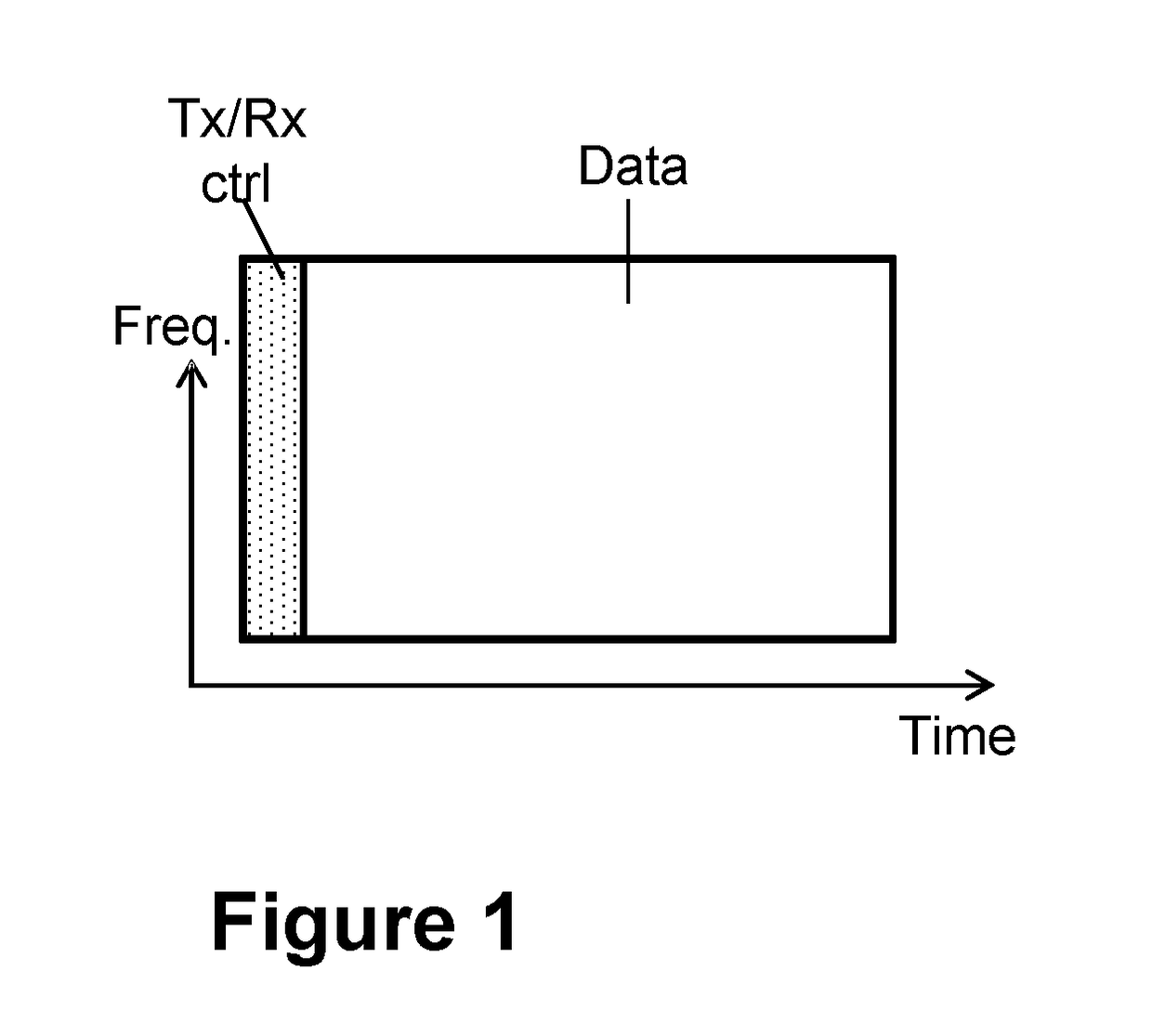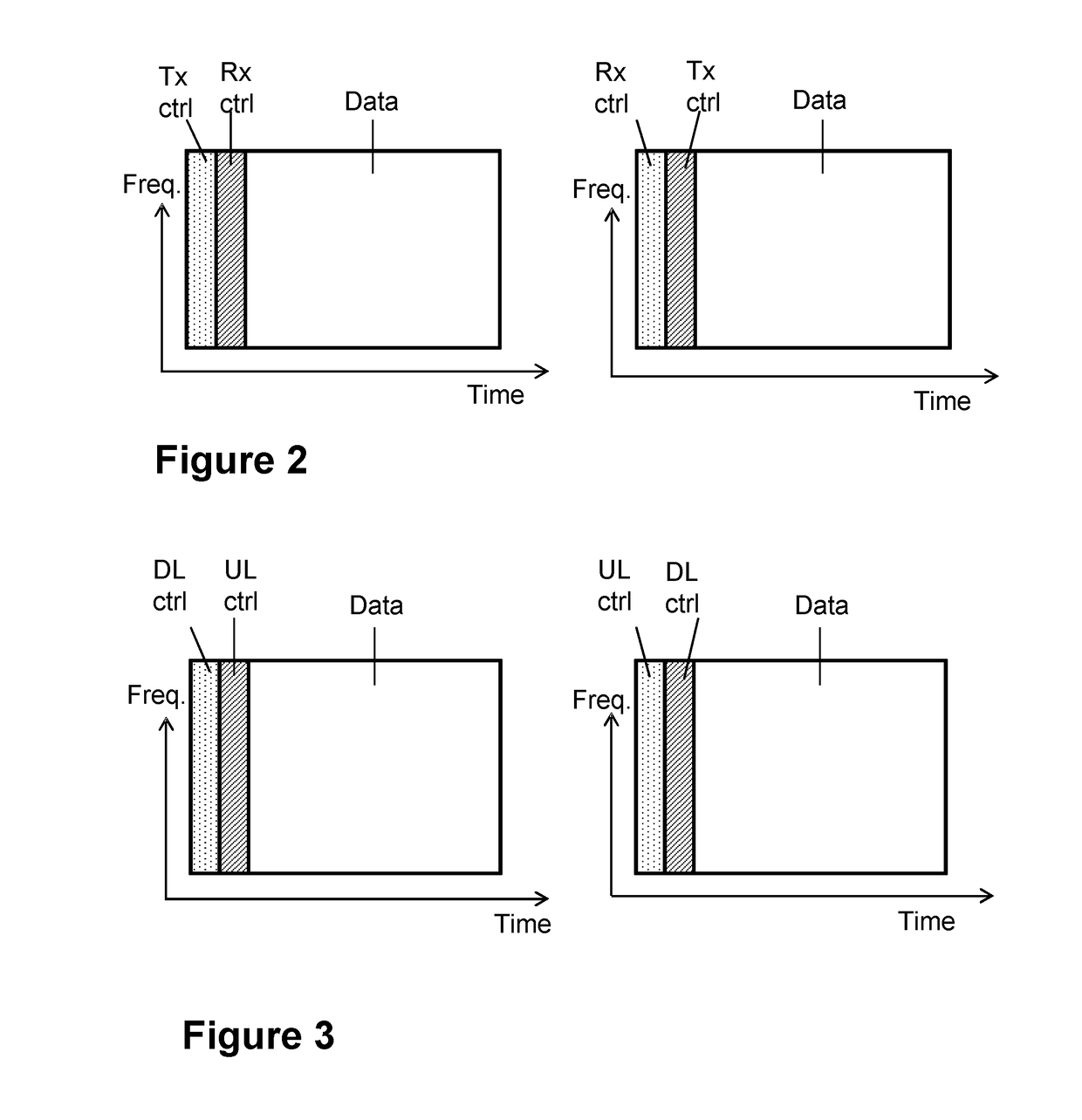Method and Device for Transmission and Reception of Time-Frequency Resources
a technology of time-frequency resources and transmission methods, applied in power management, transmission path division, duplex signal operation, etc., can solve the problems of symmetric bandwidth of fdd network in ul and dl, ineffective spectral efficiency, and inability to efficiently exchange control signaling
- Summary
- Abstract
- Description
- Claims
- Application Information
AI Technical Summary
Benefits of technology
Problems solved by technology
Method used
Image
Examples
Embodiment Construction
[0065]As part of the development of embodiments herein, a problem will first be identified and discussed. In this discussion of the problem of existing methods, ANs are used as examples of communications nodes, but the discussion should not be understood to be limited to them.
[0066]If all communication in a communications network is organized according to the left panel of FIG. 2, then two ANs, without a wired connection, may not be able to exchange any control signaling with each other. The reason is that there are no control fields in which one AN transmits and the other one receives, i.e., either both transmit or both receive, at least under the assumption of time-aligned frames between links, as discussed above. The same, of course, holds if all communication is organized according to the right panel of FIG. 2.
[0067]While for any given pair of ANs it may seem possible to have different assignments for rx and tx for the control fields for the respective ANs, i.e., left panel of F...
PUM
 Login to View More
Login to View More Abstract
Description
Claims
Application Information
 Login to View More
Login to View More - R&D
- Intellectual Property
- Life Sciences
- Materials
- Tech Scout
- Unparalleled Data Quality
- Higher Quality Content
- 60% Fewer Hallucinations
Browse by: Latest US Patents, China's latest patents, Technical Efficacy Thesaurus, Application Domain, Technology Topic, Popular Technical Reports.
© 2025 PatSnap. All rights reserved.Legal|Privacy policy|Modern Slavery Act Transparency Statement|Sitemap|About US| Contact US: help@patsnap.com



